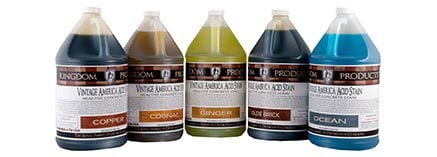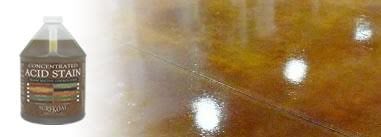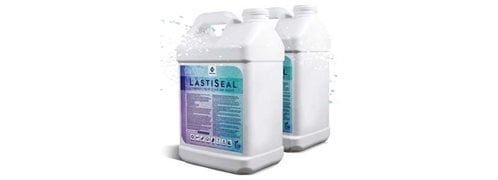- Concrete Stain Home
- Get the Look - Stained Floor Pictures
- Color Chart: Concrete stain colors
- Comparison Chart: Compare acid stains, water-based stains and dyes
- Stain Buying Tips: Questions to ask before you buy
- How to Stain Concrete
- Types of Stains and Coloring Options
- Acid-Based Stains
- Water-Based Penetrating Stains
- Concrete Dyes
- Concrete Paint
- Exterior Concrete Stain: Click through images of outdoor stained concrete projects
- Stains and Equipment Product Reviews
- Troubleshooting Concrete Stains
- Common Staining Issues: Tips from expert Chris Sullivan
- Removing Stains from Concrete
Can You Stain Over Stained Concrete?
Restaining acid-etched concrete- Question:
-
I applied a concrete stain to a large 8-year-old concrete patio in Reno, Nevada—an area subject to somewhat extreme temperature variations. I initially washed the patio with a mix of muriatic acid and water to clean it. I hosed it off, waited a day or so, and applied the stain with a sprayer, following the manufacturer's directions. Two years later, the patio now has areas of peeling. I would like to re-stain the whole patio again to make the color more uniform. I have heard that if you have washed a patio with muriatic acid, you cannot acid stain it. I am trying to find an expert who can tell me how to properly prep the surface, apply the stain and protect it. The stain I initially used was an acrylic.
- Answer:
-
The product you used—a tinted acrylic stain—is not an acid-based concrete stain. It is a translucent concrete paint and is topical, which means it forms a colored coating on the surface of the concrete that will wear over time if not maintained. The surface preparation for these types of stains usually requires acid etching to open the surface to allow the acrylic to adhere to the concrete. But once concrete has been acid etched, the ability of a true acid stain to take is diminished. You will need to do a test to see how the acid stain takes to get a true indication of color and effect.
As far as your particular situation, you should strip off the remaining acrylic stain and clean the surface with soap and water and a clean water rinse. After the area dries, apply the stain, following the directions provided by the stain manufacturer. If you're concerned an acid stain won't take, you may want to reapply the same acrylic stain after cleaning the surface. No matter the stain you use, protecting it with a sealer and proper sealer maintenance will be key to keeping the stain looking good. In your area, plan on resealing every 12 to 16 months.
Water-Based Concrete Stain Problems
Learn more about how to buy concrete stains.
Return to How to Fix Concrete Acid Stains
Shop for Concrete Stains Vintage America Acid Stain
Organic, antique patina, deep penetrating reactive stain.
Vintage America Acid Stain
Organic, antique patina, deep penetrating reactive stain.
 Acid Stain by Surfkoat
Makes up to 2 gallons. Great for marble look.
Acid Stain by Surfkoat
Makes up to 2 gallons. Great for marble look.
 Stain-Crete by Increte
9 standard colors. Useful for old or new concrete.
Stain-Crete by Increte
9 standard colors. Useful for old or new concrete.
 Elements® Transparent Concrete Stain
Water-based, environmentally and user-friendly
Elements® Transparent Concrete Stain
Water-based, environmentally and user-friendly
 Concrete Stain + Sealer in One
Waterproof, strengthen, preserve and beautify in one step
Concrete Stain + Sealer in One
Waterproof, strengthen, preserve and beautify in one step
 Concrete Acid Stain
BRICKFORM Blush-Tone Acid Stain available in 10 standard colors
Concrete Acid Stain
BRICKFORM Blush-Tone Acid Stain available in 10 standard colors
In-Fluence Water-Based Stain 24 non-reactive colors that transform concrete.




